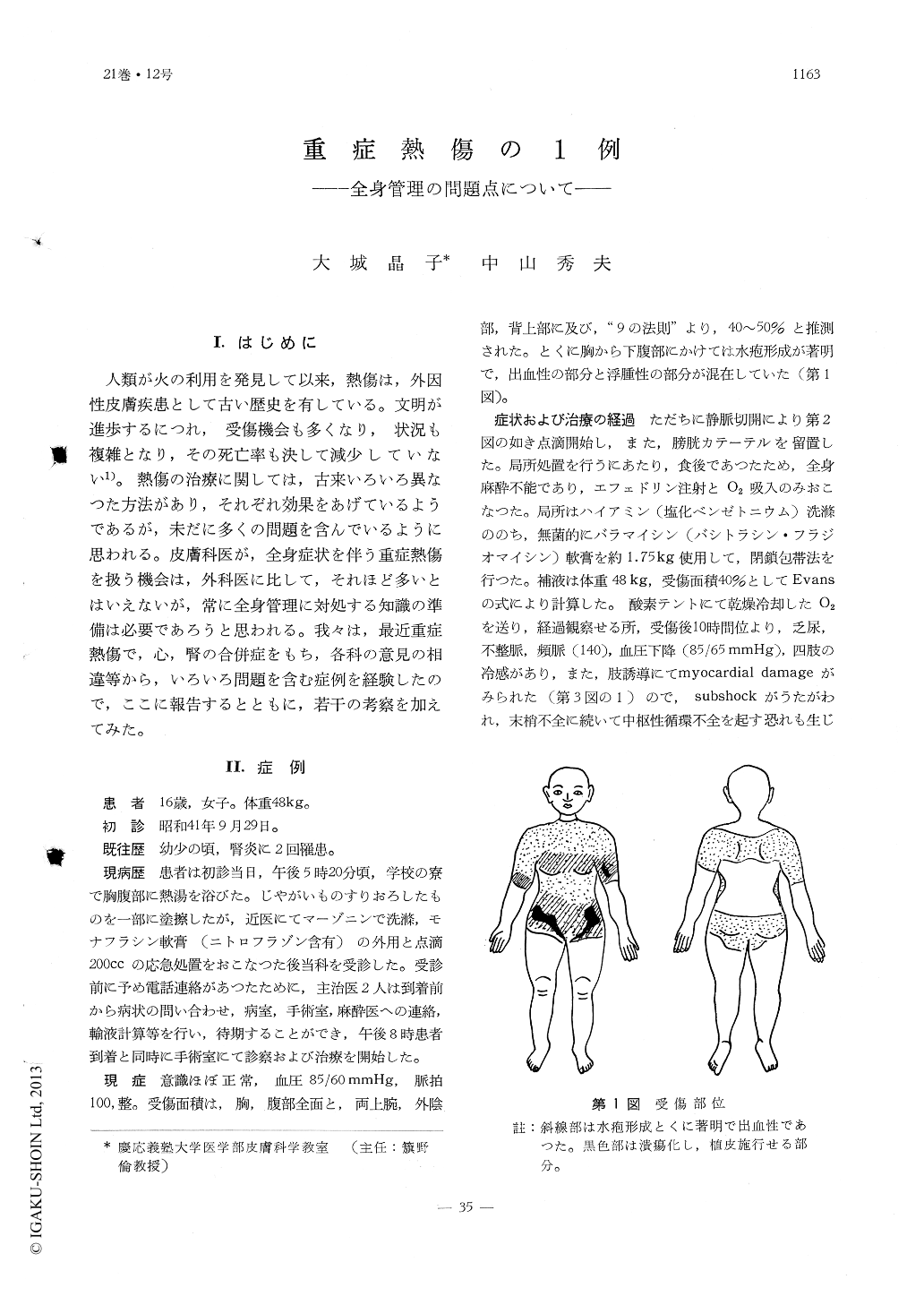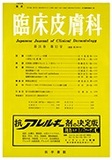Japanese
English
- 有料閲覧
- Abstract 文献概要
- 1ページ目 Look Inside
I.はじめに
人類が火の利用を発見して以来,熱傷は,外因性皮膚疾患として古い歴史を有している。文明が進歩するにつれ,受傷機会も多くなり,状況も複雑となり,その死亡率も決して減少していない1)。熱傷の治療に関しては,古来いろいろ異なつた方法があり,それぞれ効果をあげているようであるが,未だに多くの問題を含んでいるように思われる。皮膚科医が,全身症状を伴う重症熱傷を扱う機会は,外科医に比して,それほど多いとはいえないが,常に全身管理に対処する知識の準備は必要であろうと思われる。我々は,最近重症熱傷で,心,腎の合併症をもち,各科の意見の相違等から,いろいろ問題を含む症例を経験したので,ここに報告するとともに,若干の考察を加えてみた。
A 16-year-old girl of the burn which affected almost half of the entire body surface was reported. From the experience of treatment of this case, the authors proposed the following conclusions.
1) Volume of fluid supply should be rather small than the regular procedure in such a case with myocardial damage and renal insufficiency.
2) Among several kinds of colloidal fluid such as whole blood, dried plasma, PVP, or dextran, the low molecular dextran is the best.
3) Whether transfusion of the whole blood is useful or harmful could not be concluded in this case.
4) Serum potassium level should always be checked and balanced.
5) If there is no definite findings of adrenocortical insufficiency, administration of corticosteroids should be avoided.
6) Although the closed bandage method has been recommended as a topical treatment, in case of severe exudation, the exchange of bandage is inevitable. It is a matter of course that in this procedure strict prevention of infection is the most important problem as is written in the text book.

Copyright © 1967, Igaku-Shoin Ltd. All rights reserved.


